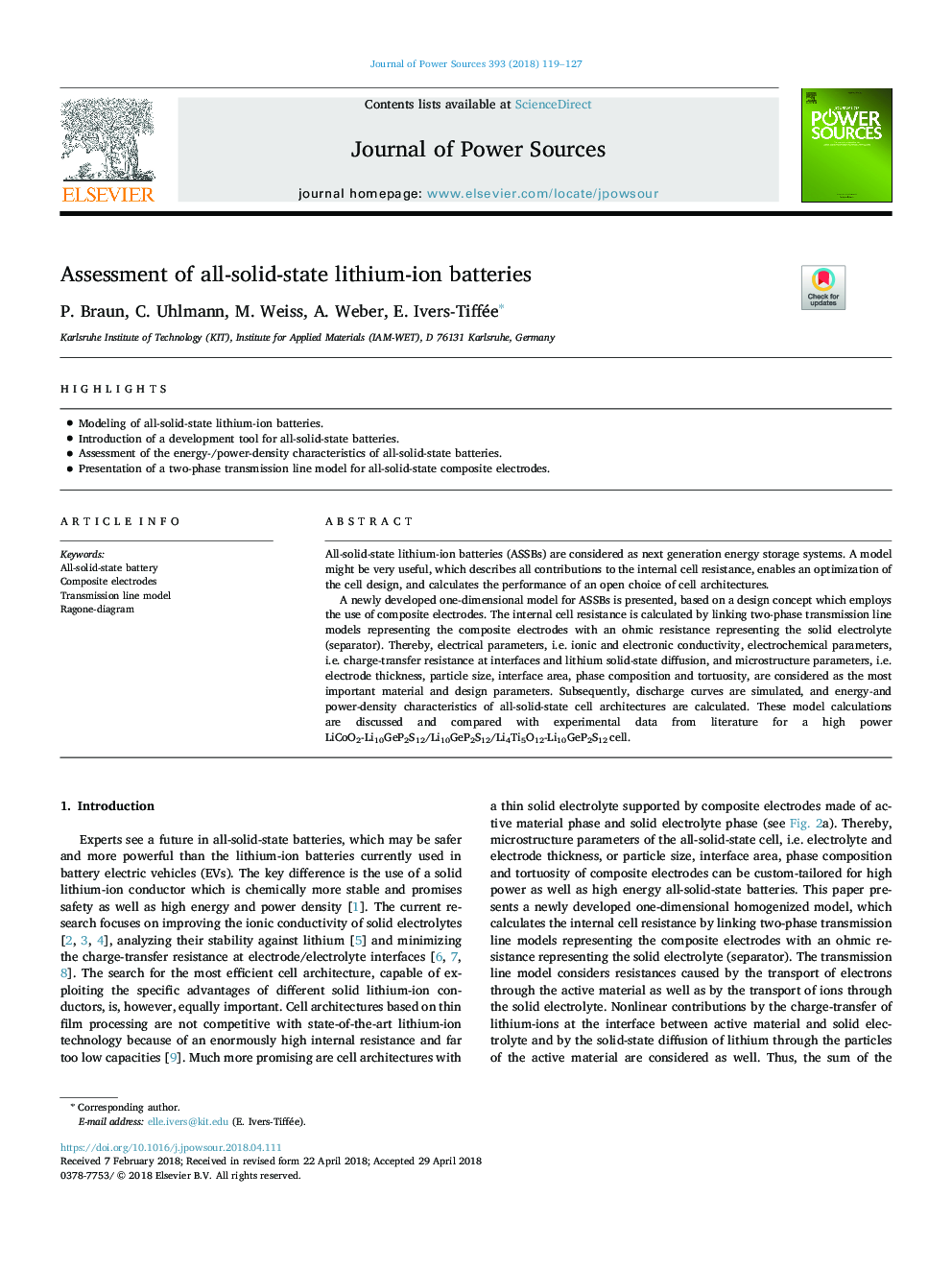| Article ID | Journal | Published Year | Pages | File Type |
|---|---|---|---|---|
| 7724888 | Journal of Power Sources | 2018 | 9 Pages |
Abstract
A newly developed one-dimensional model for ASSBs is presented, based on a design concept which employs the use of composite electrodes. The internal cell resistance is calculated by linking two-phase transmission line models representing the composite electrodes with an ohmic resistance representing the solid electrolyte (separator). Thereby, electrical parameters, i.e. ionic and electronic conductivity, electrochemical parameters, i.e. charge-transfer resistance at interfaces and lithium solid-state diffusion, and microstructure parameters, i.e. electrode thickness, particle size, interface area, phase composition and tortuosity, are considered as the most important material and design parameters. Subsequently, discharge curves are simulated, and energy- and power-density characteristics of all-solid-state cell architectures are calculated. These model calculations are discussed and compared with experimental data from literature for a high power LiCoO2-Li10GeP2S12/Li10GeP2S12/Li4Ti5O12-Li10GeP2S12â¯cell.
Related Topics
Physical Sciences and Engineering
Chemistry
Electrochemistry
Authors
P. Braun, C. Uhlmann, M. Weiss, A. Weber, E. Ivers-Tiffée,
